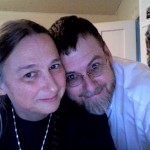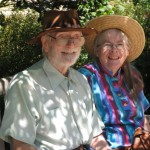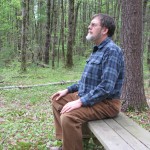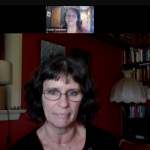I knew somebody was going to call me on it, eventually.
Though the blog is called Quaker Pagan Reflections, I do a lot more writing, day to day, about how the Quaker part fits into my life than the Pagan part. David Miley noticed:
I think it’s fair to say that you have produced less and less on pagan themes over the past year. I mean about your own personal paganism… …What I haven’t heard in a long time Cat is what you love about the pagan community.
To some extent, my relative silence on Paganism is only natural. I have been Pagan for twenty years, now, and most of the sudden discoveries and revelatory transformations of this path are behind me. In contrast, I’ve only been a Quaker for much less time. I think I write more about being a Quaker than being a Pagan, because I am more actively wrestling with what it means to me.
But David is right. Though it may make sense for me to draw from my perspective as a longtime Pagan in critiquing that community, that’s not especially fair, if I don’t first make it plain why I consider myself–passionately–a member of that community.
What do I love about Paganism?
 Well, first and foremost, Pagans.
Well, first and foremost, Pagans.
Sometimes the lame-brained things we get up to, as a group, make me crazy. But if I step back and think about the people I’ve gotten to know, and the depth of intimacy I’ve found with them–because there certainly is something about Pagan small groups and ritual that fosters intimacy–I have a different perspective.
I think, for instance, of one controversial High Priestess I know, a woman with many annoying personal ticks. However, when I am tempted to be impatient with her, I remember all the creative and intelligent men and women she has trained and sent out into the world over the years and think about what that says about her. I step back, and I look at the big picture, and things fall into place.
Paganism is like that High Priestess to me. Not without failings… but look who it feeds!
Excuse me for name dropping for a moment. Here’s a partial list of the fascinating people I’ve known, over the years, because of becoming a Pagan:
- Kirk White.
- Laura Wildman-Hanlon.
- Beth Moonstone.
- John Yohalem.
- M. Macha Nightmare.
- Maureen Reddington-Wilde
- Alexei Kondratiev.
- Andras Corben Arthen.
- Sue Curewitz Arthen.
- Jason Pitz-Waters.
- Chas Clifton.
- Michael York.
- Bloggers Ali, Erik, Jeff, David himself, and Yewtree… and many more.
- And last but very much not least, my husband Peter, whom I met through an exchange of writing in small Pagan magazines.
And that’s only the ones you might have heard of.
Others (Doug, Rhea, R., Harper and Rita, Chris S., Robin, Mike, Barbara, Carol, Amy, Penny, Chuck and Catherine, Jehana, Shaker, Andy, all my covenmates in both of my covens, my teachers, friends we made at festivals, kids we watched grow up) are either people you might never have heard of, or are people whose names are not public and who deserve their privacy.
But each and every one of these folks is someone I could easily blow an entire weekend with, doing nothing but talk and listen to them talk, pausing only for food and drink, and to toss another log onto the bonfire.
Foremost among the people I’ve gotten to know through Paganism… is me. I was a stranger to myself before I became Pagan. I was not the person I know and (mostly) like and respect today.
It is strange to me to remember it, but the person I was before I became Pagan was stiff and brittle, afraid of people, and much too inhibited to sing, full-voiced, anywhere but a shower. My friendships with Pagans–and whatever the sweet gift it is of Paganism as a spiritual path–gave me myself, for the first time since I had been too young to understand that I was odd: too intense, too smart, too wordy for most people’s comfort.
Pagans don’t mind if you’re odd, as long as you’re real. Circling with Pagans, in our flowing robes and funky jewelry–how odd to recognize this–taught me to be real.
I know that we look like a giant role-playing club to outsiders. But even the dress-up and drama, properly done, properly nurtured, are in the service of becoming genuine and real.
As I child, I had been drawn to stories of magic, of castles and knights and ladies fair. I found the convenient, dry ordinariness of the modern world a terrible cheat, but I learned to hide my romantic yearnings and to keep my outward self within the safe, conforming bounds of suburban style. I wore my tee shirts, my cords and jeans, my checked and pinstriped and polka-dotted clothing, and never let a hint shine out that I wanted silks and bodices and Celtic knotwork instead.
I remember with what trembling hands, in the merchant’s row at my first-ever Rites of Spring, I took a crescent moon crown into my hands and set it on my head. I had just that spring begun to Draw Down in coven, and I had learned that part of what was holding me back in my growth as a priestess was my fear of outward gestures and drama.
Yes, you can do magic in your blue jeans, and yes, you can touch the substance of the gods while standing in sneakers on linoleum, without moving a finger.
But you learn best to do these things skyclad or in robes, under a sky filled with starlight and with the smell of a fresh haycrop in your nose. You learn best to raise and direct energy while moving your breath, your arms, your whole body in harmony with that flow. And it will look dramatic. It will look good. And it will feel… like those fairy tale visions of your childhood, if you let it.
I bought that crescent moon crown, unnecessary toy though it was, and in the purchase I bought back something of myself I’d sold off long ago: something that was willing to take up space in the world, and be perhaps a little too intense, too smart, too wordy, too real for most people’s comfort.
Allowing my dramatic, romantic side to flower allowed my humor and my plainness, my ordinariness to root beside it. Nowadays, I love the ordinary, because Paganism allowed me to live within the real–for me, a reality that has always included dimensions not contained in the latest American Idol broadcast or McDonald’s Happy Meal.
Pagans love the anachronistic, the romantic, the embroidered. And, however much of a secret I may try to keep it, so do I.
Pagans love the creative, the original, the do-it-yourself artist, musician, poet, architect, seamstress, jeweler, healer, priest. We nurture this creativity, acting as an appreciative audience for one another. And if I groan inwardly when someone takes the center of a bardic circle for a poorly-prepared, unrehearsed and off-key rendition of one of Gwyddion’s songs, I also understand the love that went into that musical selection.
We create. More than any other religious community I know, Pagans are creators. What gifts we have within, we share… and, yeah, sometimes that means looking at one drawing of a gooey, anorexic elf-chick too many. But however much or little we have within us, something in Paganism draws it out. What do you have inside? Paganism is always whispering. What can you create? What can you share? What do you see?
In a world of fast-food, instant culture, where there are experts to meet every need, and every creation is a commodity, the raw and sometimes stumbling creative urge of Pagans in community is a vital counter-balance.
We don’t give up our power in the name of not making fools of ourselves. We take ourselves seriously in ways it is easy to stand outside of and mock–but none of the magic passes to those outside that circle. Those of us standing within it, caught up in serious play, get to remake ourselves, get to re-envision the world.
And, if we play long enough and sincerely enough and honestly enough, we make ourselves real. We wake up. We wake up because we are dreaming.











